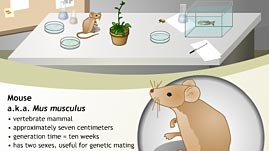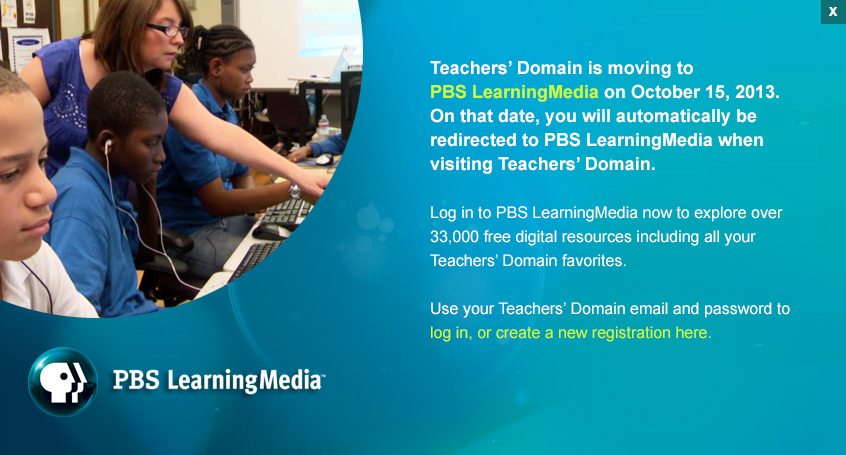Teachers' Domain - Digital Media for the Classroom and Professional Development
User: Preview

Source: Cold Spring Harbor Laboratory, Dolan DNA Learning Center
This interactive activity from the Dolan DNA Learning Center illustrates several model organisms—including mice, roundworms, and zebrafish—that are commonly used in scientific research. Learn how the small size and short generation time of these model organisms make them ideal candidates for study. The activity also describes additional advantages of each model.
Based on outward physical appearance alone, baker’s yeast, roundworms, and humans have nothing in common. But on the inside—where genes provide the instructions for building proteins, which in turn control cellular processes essential to life—it’s a different story.
Until recently, scientists were convinced that the incredible diversity of life must result from a similarly diverse set of processes and controls. Once genes were discovered, most scientists believed that they too were particular to each organism. We now know that all organisms—no matter how different they look from one another—have a vast number of genes in common. Because most human genes are identical to the genes of other living organisms, the genetic study of other organisms can reveal a lot about the human genome and how our genes function.
Scientific research on human bodies is often unfeasible. As a result, scientists use stand-ins—called model organisms—that have several practical advantages when used as research subjects. The most commonly chosen species have short life cycles, are small in size, cost little, and present few ethical problems. Although model organisms may not be closely related to humans on the evolutionary "tree of life," the similarity of their genomes to ours has allowed scientists to learn much from them that has translated into cures for human diseases and important insights into cellular makeup and function.
One such model organism—the fruit fly—has been studied for over 100 years and has had more data collected on it than any other model organism. It remains a popular choice of research scientists today because the relationship between its genes and human genes is so close, and because large populations can be maintained easily and inexpensively in the lab. It has a simple diet (spoiled fruit) and breeds quickly within its two-week life cycle. This means that many generations of fruit flies can be studied in the course of a year. Research into mutations seen in certain genes of fruit flies has led to the discovery of the genetic basis of many human birth defects.
The mouse is the model organism most closely related to humans. In fact, mouse and human genomes are approximately the same size and contain the same number of genes. Most human genes have mouse counterparts, and the functions of these genes are closely related. Mutations that cause diseases in humans often cause similar diseases in mice.
 Loading Standards
Loading Standards Teachers' Domain is proud to be a Pathways portal to the National Science Digital Library.
Teachers' Domain is proud to be a Pathways portal to the National Science Digital Library.
